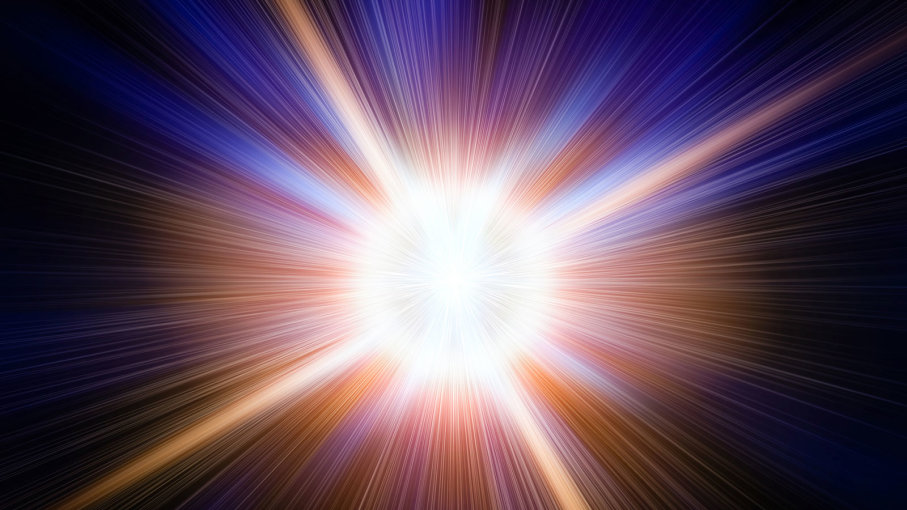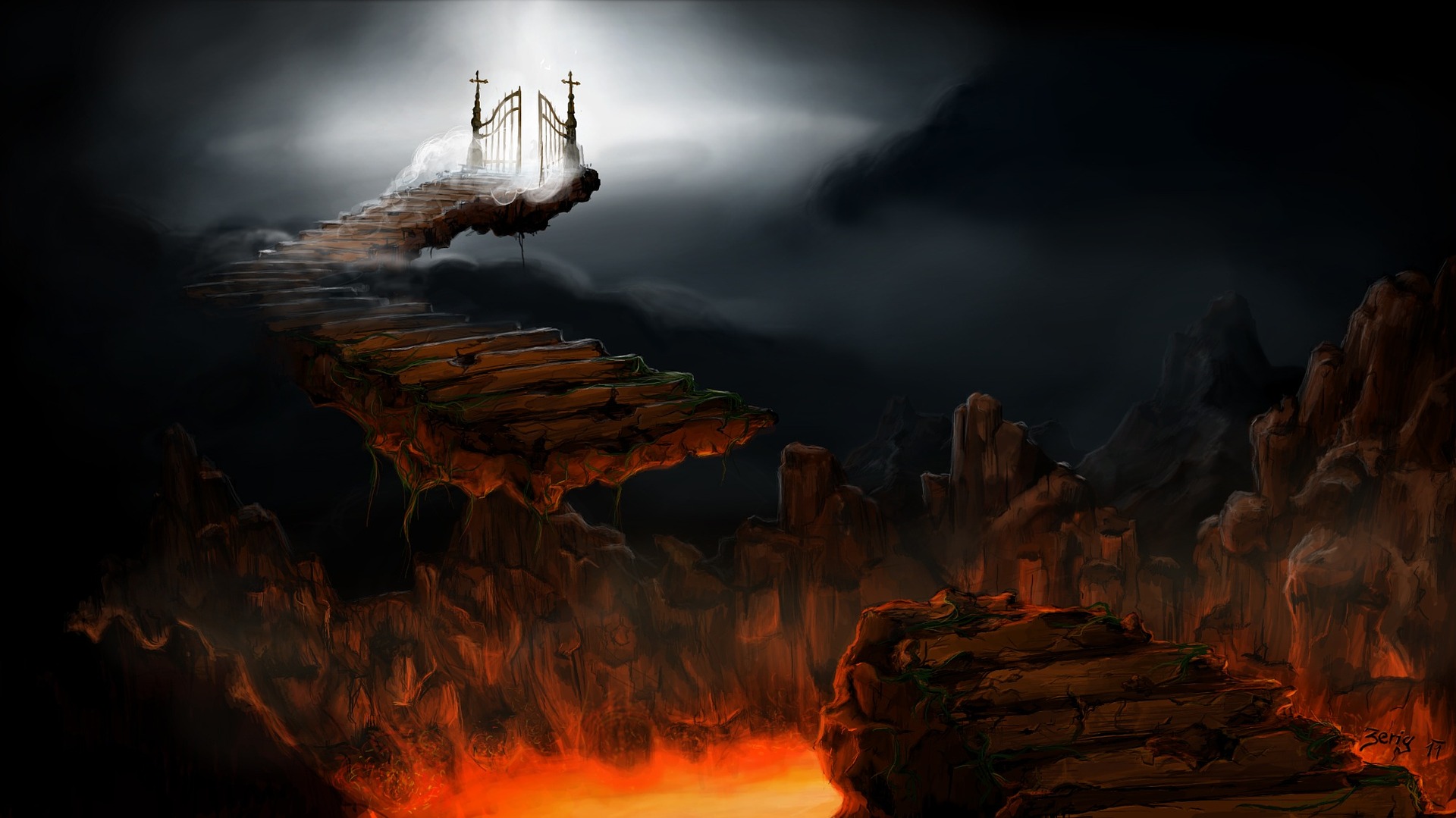Did The Universe Begin To Exist? Or Has It Always Been Here?
We’ve begun to investigate clues in the reality that we live in to try and determine why things are the way they are. It only made sense to start with the beginning of everything and that means the beginning of the universe. But, did the universe really begin to exist? Or has it always been here? The vast majority of scientists will tell you that the universe had a beginning, but why? How do we know? Space seems so big, so how can we tell that it started at some point and hasn’t just gone on forever?
To Infinity and Beyond!
In order for the universe to have always existed, it would mean an infinite number of things could exist – namely past events prior to today. But, as we will see, an infinite number of things cannot exist. “But, Dave”, you may say, “I learned about infinity in my math class in high school.” This is true. So, before we can go any further, let’s quickly look at the difference between potential infinity and actual infinity.
Potential vs Actual Infinity
It is true that we can sit and talk (and perfectly understand) about an infinite number of things. For example, we could picture a line 100 feet away and then take steps to cut that distance in half. And then take steps to cut that distance in half. And again. And again. And again. And we understand that we could keep doing this forever (an infinite amount of times) and never reach the line at the other end. This is what we would call potential infinity. That is to say infinity serves as an ideal limit that is never reached. Potential infinity is what we learned in math class.
But, because of what we do know about infinite set theory (doing math with infinite numbers), we can quickly see how actual infinity (an infinite number of things in the real world) leads to all sorts of absurdities.
Here’s a pretty easy one to think about regarding the universe and time. Let’s say that for every 1 rotation around the sun for the planet Saturn the Earth completes 2 rotations. So, after Saturn has gone around once, Earth has gone around twice. After Saturn has gone around twice, Earth has gone around 4 times. And so on and so on. By the time Saturn has gone around 1,000 times, Earth would have gone around 2, 000 times. By the time Saturn would have gone around 5 million times, Earth would have gone around 10 million times. The gap between the number of rotations just keeps getting bigger and bigger. And yet, if time were infinite, guess how many times Saturn would have gone around? Infinity. And how many times would the Earth have gone around? Infinity. But, if the Earth goes around twice as fast as Saturn, wouldn’t it be 2 x Infinity? Well, sure. But the answer to that math problem is… infinity. And, guess how big the gap would be between the rotations of Saturn and the rotations of Earth. You guessed it; infinity. The amount of times each planet has gone around the sun would be equal despite the Earth rotating around twice as fast.
This sound like a head-scratcher? Maybe with our limited minds, we are unable to comprehend how infinity works. In reality, it’s because we do know how infinity works that we can see how absurd this becomes pretty quickly.
Evidence From Science
Sometimes the philosophical evidence can be hard to master. The good news is we have a diversity of evidence to show that the universe began to exist and a lot of it comes from scientific observation.
The Expansion Of The Universe
In the first article, where we laid out the cosmological argument, we heard about many of the scientific and mathematical discoveries that occurred in the first half of the 20th century that led scientists to discover that the universe was expanding. Einstein developed his theory of relativity – which was independently verified by Alexander Friedman and Georges Lemaitre. And, Edwin Hubble observed the redshift in the light from distant galaxies. But, these observations aren’t all of the science we have that points to a beginning of the universe. There are other laws and observations that point to the same thing.
The Second Law of Thermodynamics
The second law of thermodynamics deals with energy over time. It tells us that, in a closed system, entropy (disorder) will occur as energy and matter transform and move towards equilibrium. As an example, think of a quiet pond in the woods; its surface still and unmoving. Now, imagine what happens when you toss a rock into it or a frog jumps in from the bank. There is an initial splash of water followed by ripples that spread out from where the object impacted the water’s surface. Ripples are their largest the closer to the center they are. And, as a ripple moves away from the center, it gets smaller and smaller until eventually, it ends. Over time, the ripples that are created are created smaller and smaller so that they go out shorter and shorter distances over time. Until, eventually, the ripples are all gone and the surface is calm once again (equilibrium).
The same thing is occurring within our universe. As time goes on, our universe is running out of usable energy as it is converted into other things. Because the useable energy in the universe is diminishing, we can conclude that one day, all of the energy will be gone. Because of this, life will no longer exist.
So, how does the second law of thermodynamics show us that there was a beginning? Well, now, let’s bring in the first law of thermodynamics (there are three in total) which tells us that there is a fixed amount of energy in the universe. In other words, it is never added to, nor subtracted from – only converted into other things (heat and pressure mainly). So, if we have a finite amount of energy, and that energy is continually being consumed, would the universe still have energy if it had been in existence forever?
Another great way to look at this is the life of your cell phone battery (or anything else with a battery). After you take it off the charger, the battery is full. But, if you never plugged it in again, the battery would eventually reach zero and the phone would shut off. The battery can only hold so much energy. And, unless you charge it again (introduce more energy), the phone will eventually die. But, if you phone had always existed, running on this single battery with a finite amount of energy, why hasn’t the battery died yet? That’s because the phone hasn’t been running forever. It’s only been running since you last charged it.
The fact that the energy in the universe is becoming less orderly over time means that – at one point – it was more orderly. This points to a beginning of the universe. Think of pedaling a bicycle. As you coast, you lose momentum. But, if we were to rewind the video of you coasting, we would see you going faster and faster as the video rewinds until we reached the moment at which you pushed on the pedal to create the forward movement. You could not have been coasting for eternity if you are losing speed because if you had been coasting for eternity why haven’t you run out of energy yet?
With the universe, there is no second rock to be thrown in to make more ripples. Nor is there a universe charger for us to recharge our batteries. There was an initial rock toss or battery charging and that was it.
Radiation From The Bing Bang
Around 1948, scientists began to predict that if the Big Bang were true, there should be some detectable radiation left over from it that we could observe. In 1965, two astronomers confirmed this by accident from their observatory at Bell Labs in Holmdel, New Jersey. Arno Penzias and Robert Wilson started picking up strange radiation no matter which direction they pointed their antenna.
What these two scientists discovered is known as the cosmic background radiation of the Big Bang. It is the afterglow made of light and heat from the initial explosion. The wavelength of the light is too short for us to see anymore due to the stretching of the universe. The heat, however, can still be detected.
The only explanation for this afterglow is the Big Bang. In his book God and the Astronomers, agnostic astrophysicist Robert Jastrow had this to say:
No explanation other than the big bang has been found for the fireball radiation. The clincher, which has convinced almost the last doubting Thomas, is that the radiation discovered by Penzias and Wilson has exactly the pattern of wavelengths expected for the light and heat produced in a great explosion. Supporters of the Steady State theory have tried desperately to find an alternative explanation, but they have failed. At the present time, the big‐bang theory has no competitors.
Jastrow, God And The Astronomers
Galaxy Seeds
Soon after Penzias’s and Wilson’s discovery, scientists determined that if the Big Bang actually occurred, we should be able to see variations (ripples) in the temperature of the cosmic radiation they discovered. These ripples allowed matter to gather by gravitational attraction into galaxies.
In 1989, NASA launched the COBE (COsmic Background Explorer) satellite to check for these ripples. COBE not only found the ripples but showed an amazing degree of precision. The explosion and expansion of the universe was just perfect enough to allow for the galaxies to form and also not allow them to collapse back in upon themselves. Even the slightest variation one way or another and life would never have existed. George Smoot, project lead on the COBE satellite went so far as to call them the “machining marks from the creation of the universe” and the “fingerprints of the maker.”
The Universe Began To Exist
Based on philosophical arguments, and many pieces of scientific evidence, we can see that the universe had a beginning. It hasn’t always been here. Even though we know how to do math with infinite sets, we can see that infinity does not exist in a practical sense. Also, numerous scientific and mathematical discoveries in the 20th century lead us to believe that the universe had a starting point. As we determined last time, if something began to exist, something had to “begin” it. In our next and final article, we will go through the list of possible suspects and determine which one most reasonably fits the crime and the evidence we have found at the scene.
Share This Story, Choose Your Platform!
latest video
news via inbox
Nulla turp dis cursus. Integer liberos euismod pretium faucibua








if the universe has always been than it stands to reason God has always been. The universe, as we know it today, didn’t just happen out of nothng. Also what than controls the systematic and/or mathematic hapenings throughout the universe. It doesn’t control itself, Even Stephen Hawkins admits that a splt second difference in many things would have resulted in events we wouldn’t even want to know about.Man has again shown that he believes he has all answers, when in fact God is the answer.
The universe has continued to reveal that it is finite, and that it has both a beginning and an end. In contrast to that, God is infinite and has always continued to be here and reveal Himself, revealing his perfection through creation. If something is not infinite, it can not be perfect, because it will slowly diminish & approach its ending, in the same way this article emphasizes the fact that energy in the universe has a beginning, and is slowly diminishing to its end in a more chaotic manner as time passes. That reveals that at one point, energy was close to perfect/orderly, but was never truly perfect, because it is finite, unlike God, has always been.
Hi Angie,
Great observation.